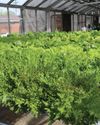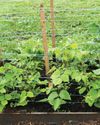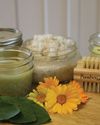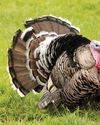Prøve GULL - Gratis
Teas to Please
Hobby Farms
|Healing Herbs - 2023
MAKE DELICIOUS, REFRESHING, HOT HERBAL BEVERAGES.

When it comes to herbal medicines, teas are the gateway drug. They're easy and relatively harmless to make; plus, who can resist snuggling up with a warm cup of tea after a grueling day of farm chores? While teas from black to green to oolong have both flavorful and healthful qualities, herbal teas, aka tisanes, are one of a host of natural products that you can grow on your farm to boost the immune system and even treat common ailments, such as cold, flu, anxiety or digestive upset, without a trip to the pharmacy.
"It can be helpful to consume teas that contain nutrient-dense herbs on a daily basis because the nutrients are easily assimilated and are very nourishing," says Christa Sinadinos, a clinical herbalist and founder of the Northwest School for Botanical Studies.
Herbal teas can be made from any part of the plant-roots, leaves, flowers or stems-though the effective parts will vary among plants. If you decide to selftreat with a homemade herbal tea, it's important to use the correct part of the plant. It's also wise to consult a doctor or knowledgeable herbalist first. While most herbs can be safely consumed, some can interact negatively with medications or other herbs.
To make a warm, tasty treatment, crumble or break apart the part of the plant you intend to use. For teas that use aboveground portions of the plant, you'll make an infusion by placing the herb in a vessel, covering with boiling water and steeping for 15 minutes to four hours. (The longer the steep, the more medicinal qualities will be extracted.) For teas made from roots, you'll make a decoction: Place the herb in a pot and pour cold water over top. Bring the water to a boil, and the turn down to a simmer, steeping for an hour or longer.
Denne historien er fra Healing Herbs - 2023-utgaven av Hobby Farms.
Abonner på Magzter GOLD for å få tilgang til tusenvis av kuraterte premiumhistorier og over 9000 magasiner og aviser.
Allerede abonnent? Logg på
FLERE HISTORIER FRA Hobby Farms

Hobby Farms
Fermented Bruschetta
It's tomato time, so use those ripened, garden-grown beauties to ma make some fermented bruschetta! This recipe will show you how.
2 mins
July/August 2025

Hobby Farms
Raising Plants Hydroponically
This issue's column comes from a slightly different perspective, as producing plants hydroponically is a practice that hasn't yet caught on with many farmers. Yet, it could certainly fit very easily into any number of farming operations.
7 mins
July/August 2025

Hobby Farms
HEALTHLY HIVES
Nurturing a beehive can turn out to be nearly as sweet as the liquid gold found at the end.
7 mins
July/August 2025

Hobby Farms
Assessing Market
As your hobby farm grows from pleasure toward profit, consider the next step: a farmers market.
7 mins
July/August 2025

Hobby Farms
METAL TOXINS & DUCKS
Poisoning from metal toxins is a surprisingly common issue in backyard duck flocks.
4 mins
July/August 2025

Hobby Farms
Big Bean Bonanza!
With literally thousands of varieties available, there’s bound to be a bean or two that will suit your growing conditions and please your palate.
6 mins
July/August 2025

Hobby Farms
Herbal Hand Healers
Create a hand scrub and lotion from your garden.
7 mins
July/August 2025

Hobby Farms
NARRAGANSETT TURKEY
Narragansetts are meat turkeys known for being very prolific, broodiness and possessing calm dispositions.
1 min
July/August 2025
Hobby Farms
Plant Cukes In July
If you live somewhere in USDA hardiness zones 5, 6 or 7 and you want a bigger, better cucumber harvest, sometime during the first two weeks of July is an excellent time to plant more cucumbers.
2 mins
July/August 2025

Hobby Farms
LARGE BLACK HOC
The Large Black is a docile heritage breed of swine originating in England improved from the Old English Hog from the regions of Devonshire and Essex.
1 min
July/August 2025

